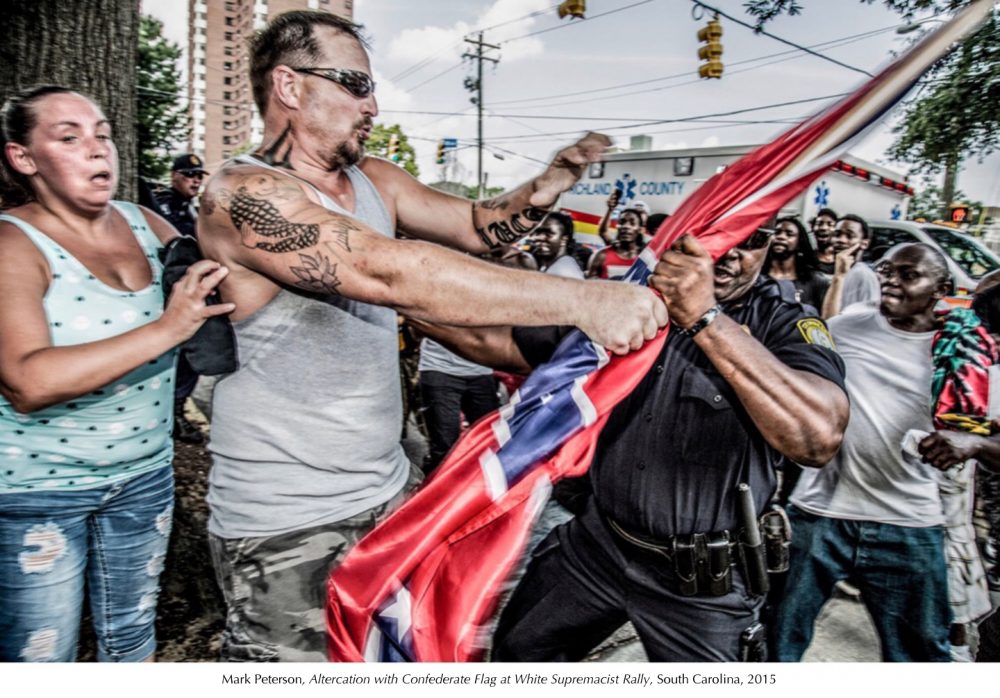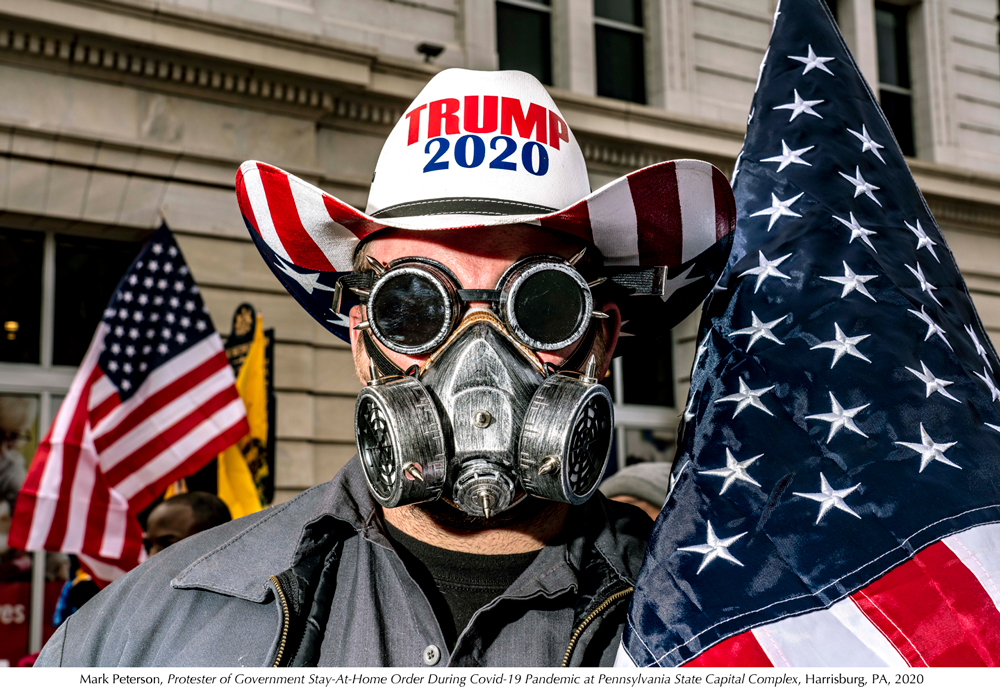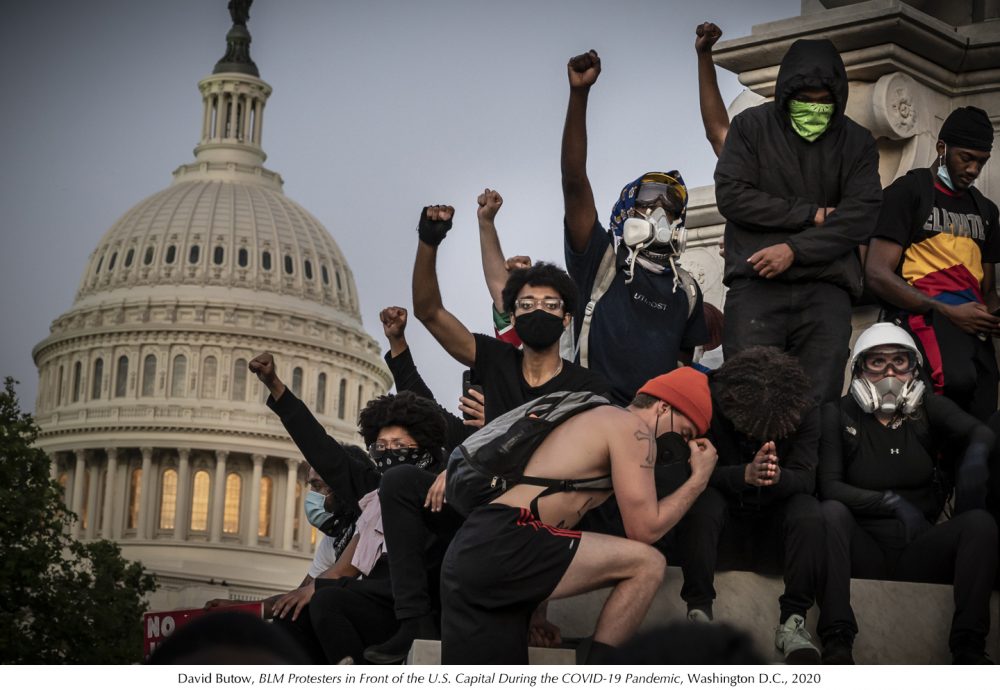“Democracy is never a thing done. Democracy is always something the nation must be doing.”
– Archibald MacLeish
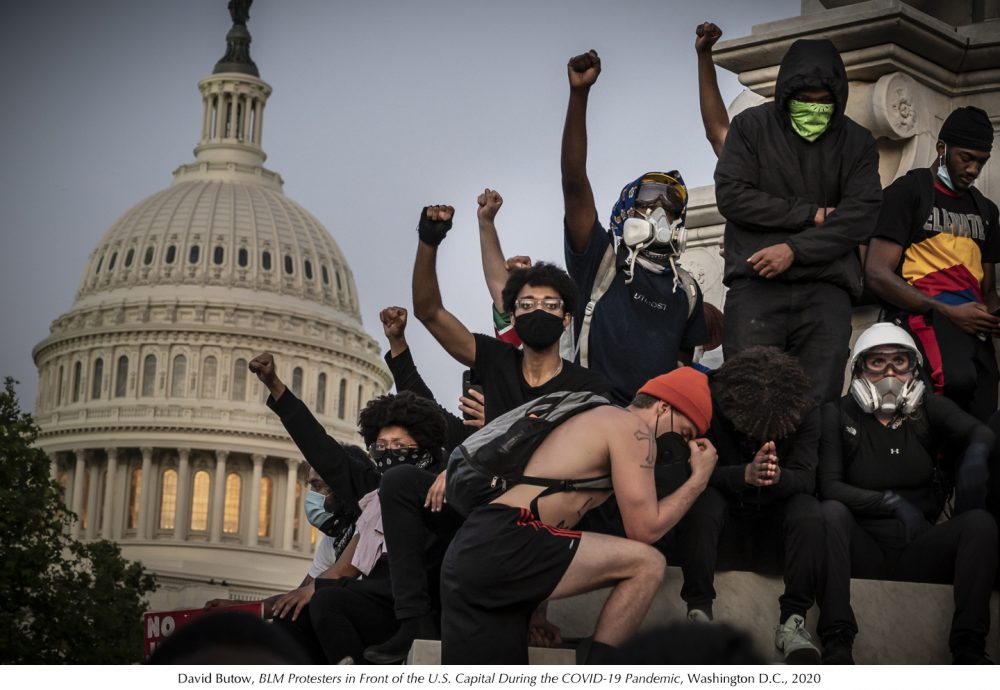
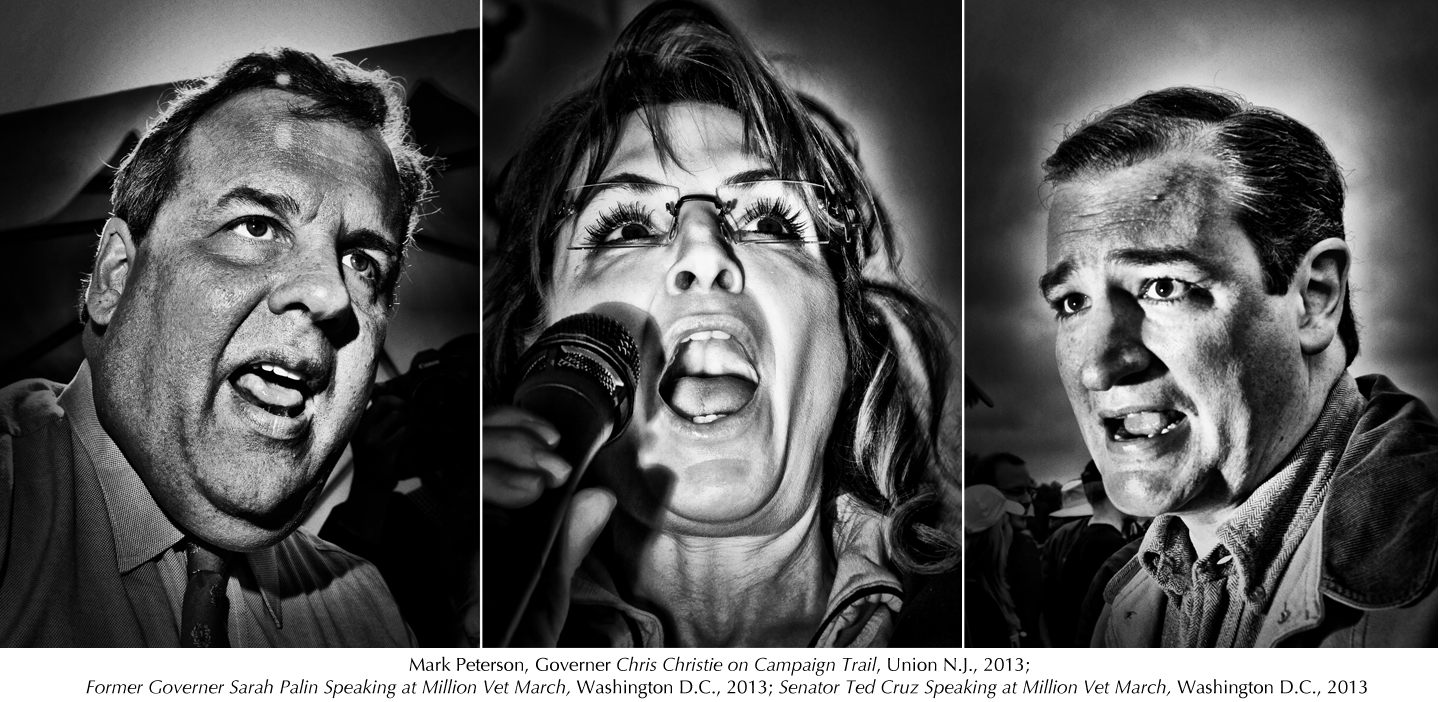
Few contemporary American photographers have covered the endless living, breathing spectacle of democracy with more dedication and distinction than Mark Peterson and David Butow.
Often working on commission for magazines who encourage more interpretive coverage of the political scene and facilitate inner-ring access to the campaign trail and marquee D.C. events, both photographers separate themselves from the pack by curving their lenses around the corners of the carefully controlled pageant on center stage. Their resulting images not only bear historical heft, but are perpetually surprising.
When not roaming the halls and chambers of Capital Hill buzzing with star political players, both artists also photograph the eruptions of the general electorate at conventions, protests and rallies with equal acuity and humanity. Yet with a sensibility and style that is strikingly divergent.
Countering the garish sensationalistic vibe of Network TV, David Butow’s subdued atmospheric scenes of Congressional hearings quietly evoke classical paintings or stately staged plays. Several channel Jacques-Louis David’s neo classical paintings; most notably, a photograph of Robert Mueller preparing to testify, surrounded by a swirl of press and congressional staffers, uncannily recalls David’s political allegory, “The Tennis Court Oath.”
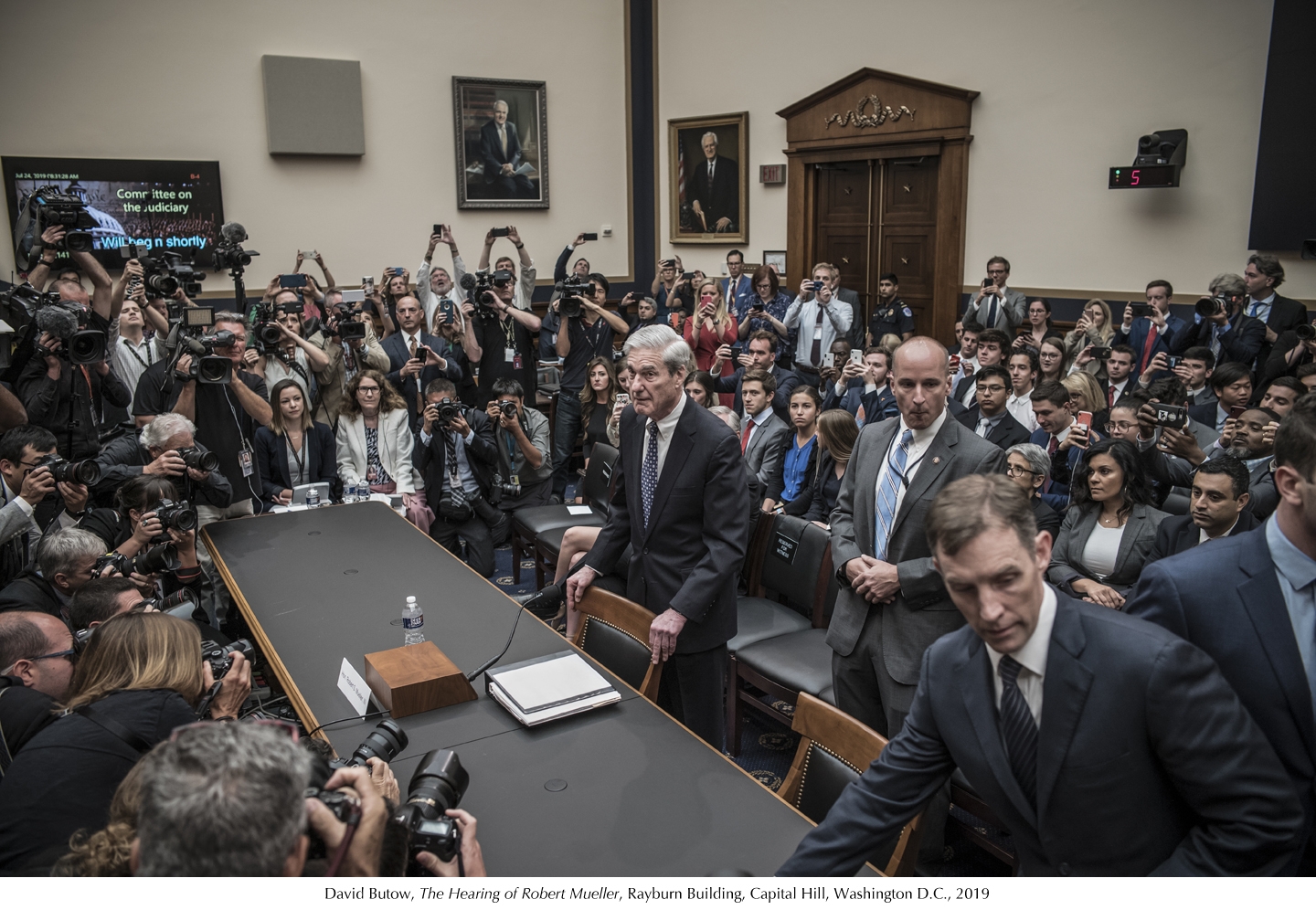
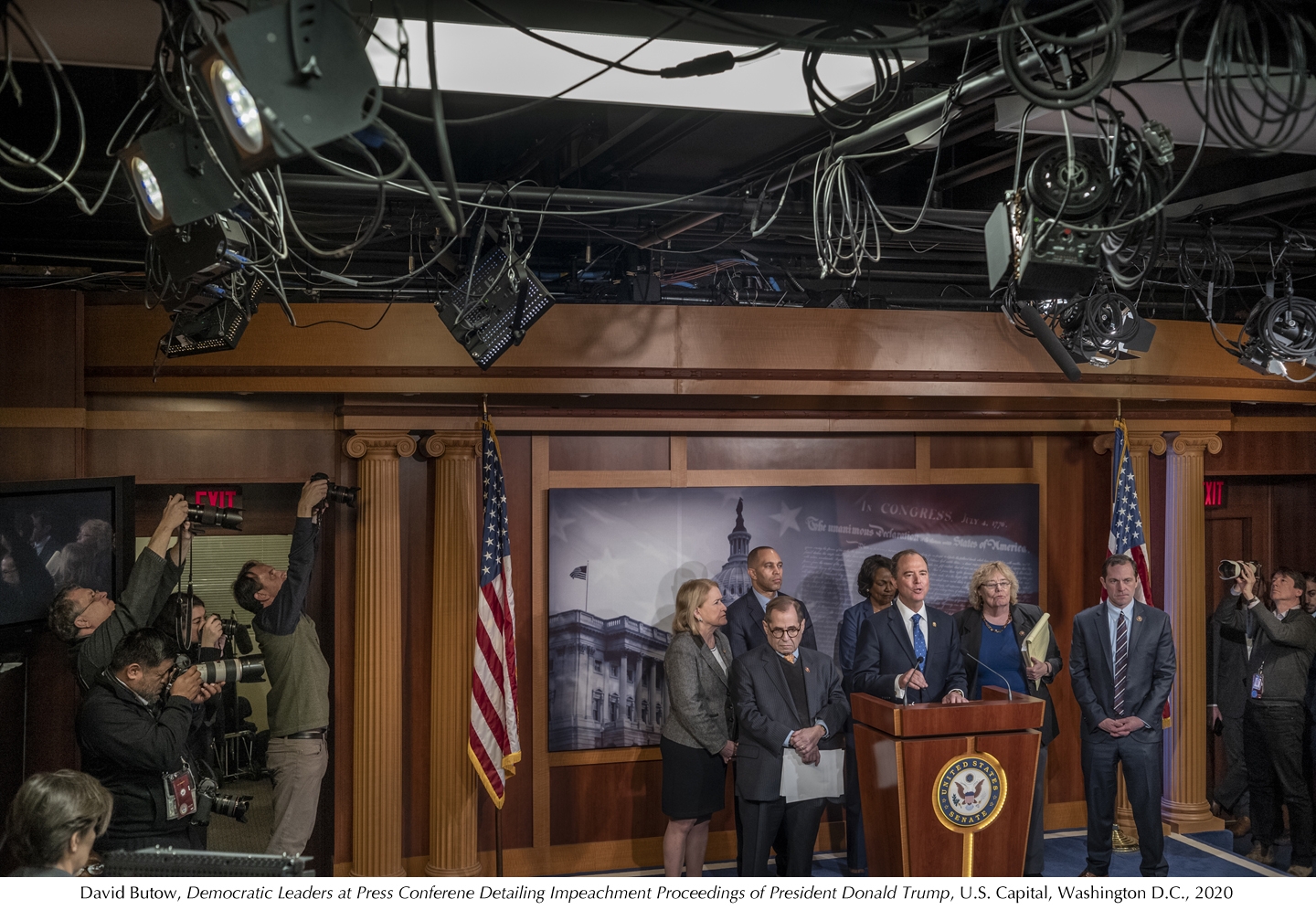
“I’m trying to get at how these kind of events might be depicted in the pre-photography era, “ says Butow. I’m more interested in making a picture that captures a moment in history rather than a timely news event, an image that might be interesting to people a hundred of years from now.”
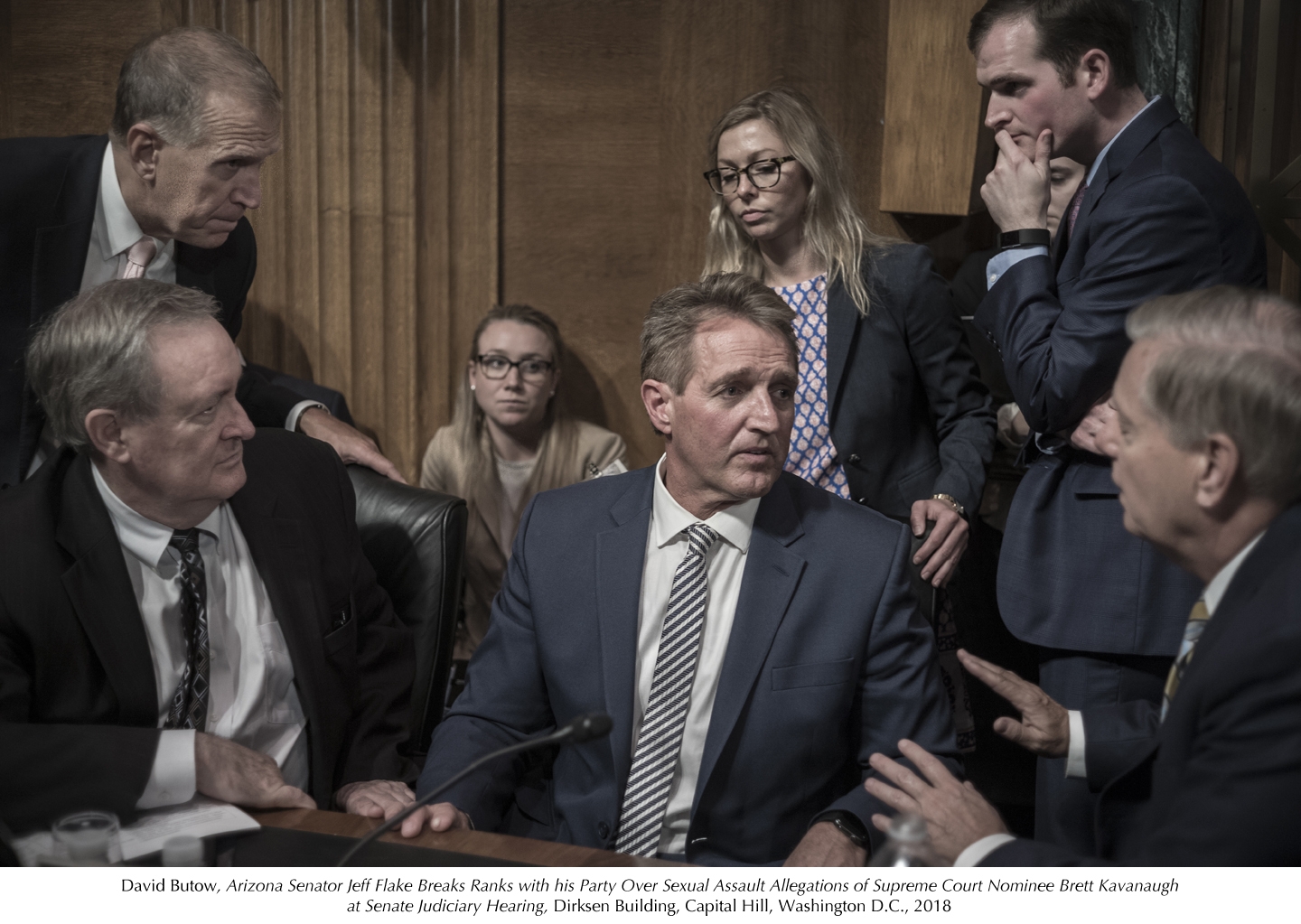
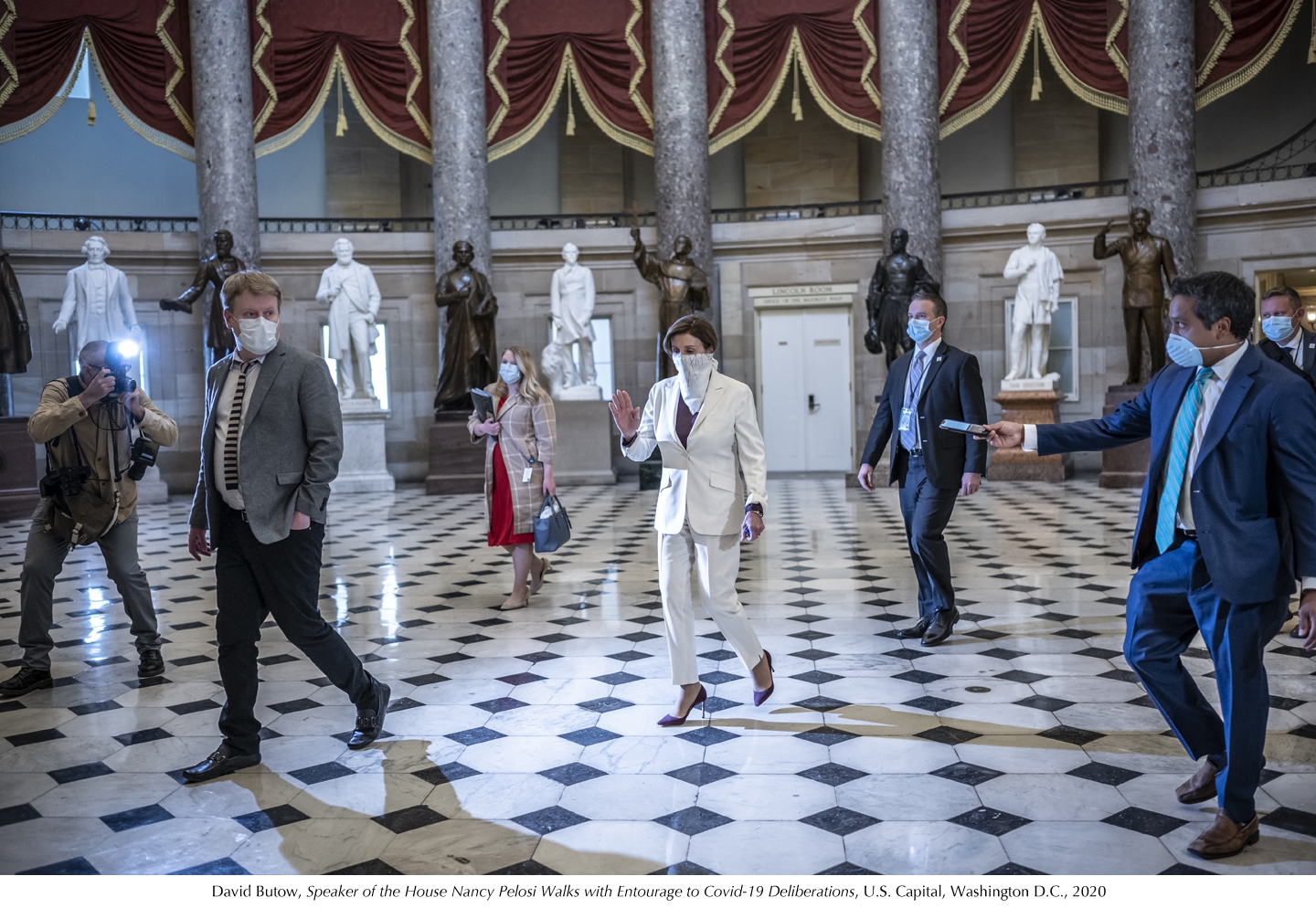
Butow not only perceives aesthetic majesty in the often dry democratic processes, but also in the fight over whether democracy will exist. His recent images of the Hong Kong student protests, though more explosive and intense, are delivered with the same classical power.
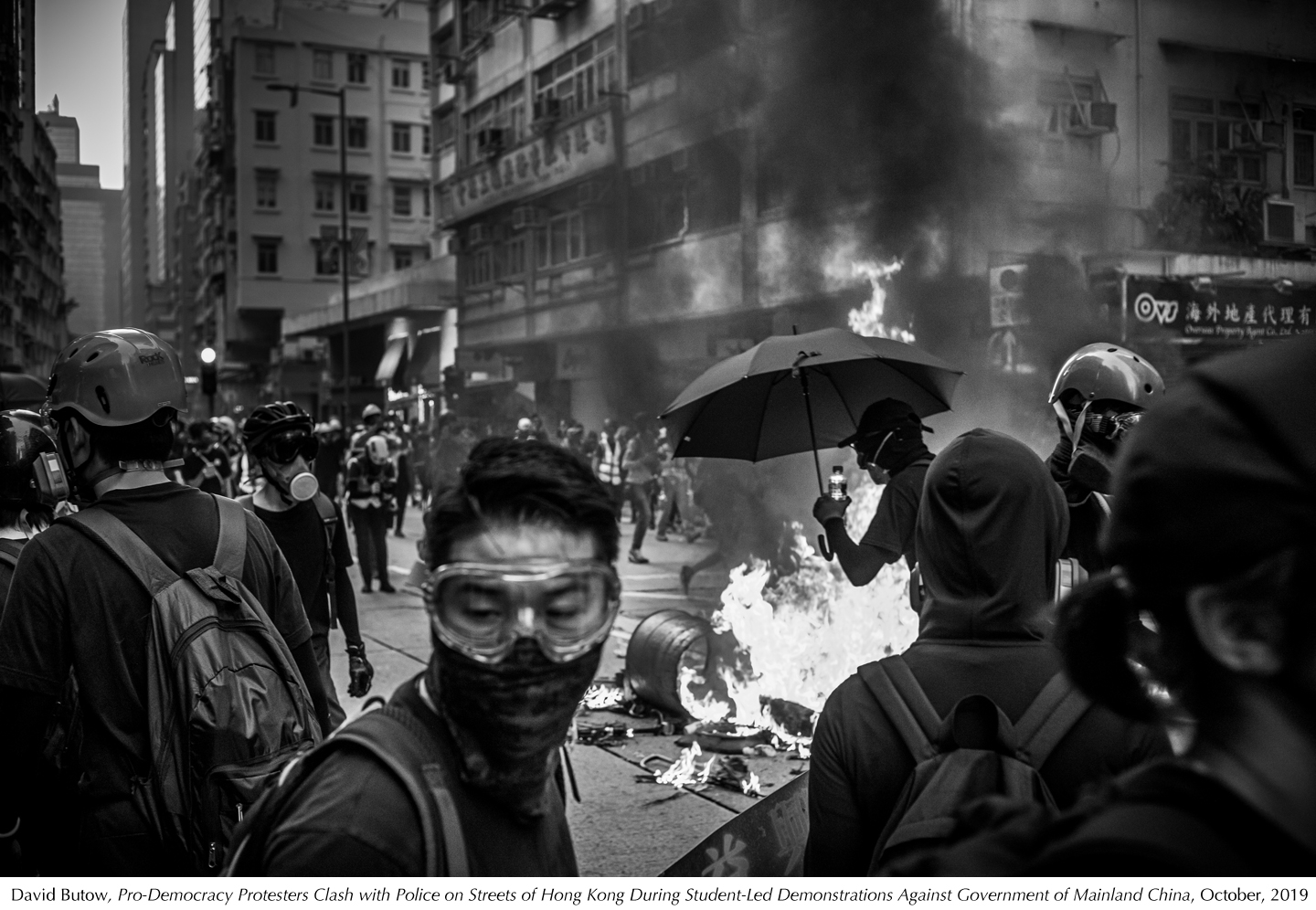
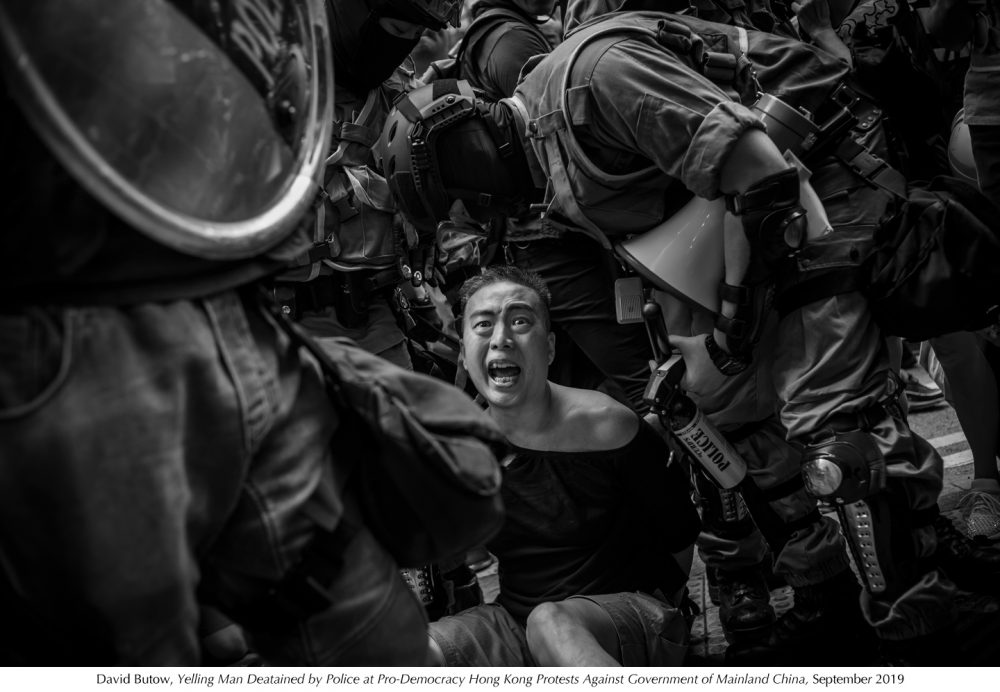
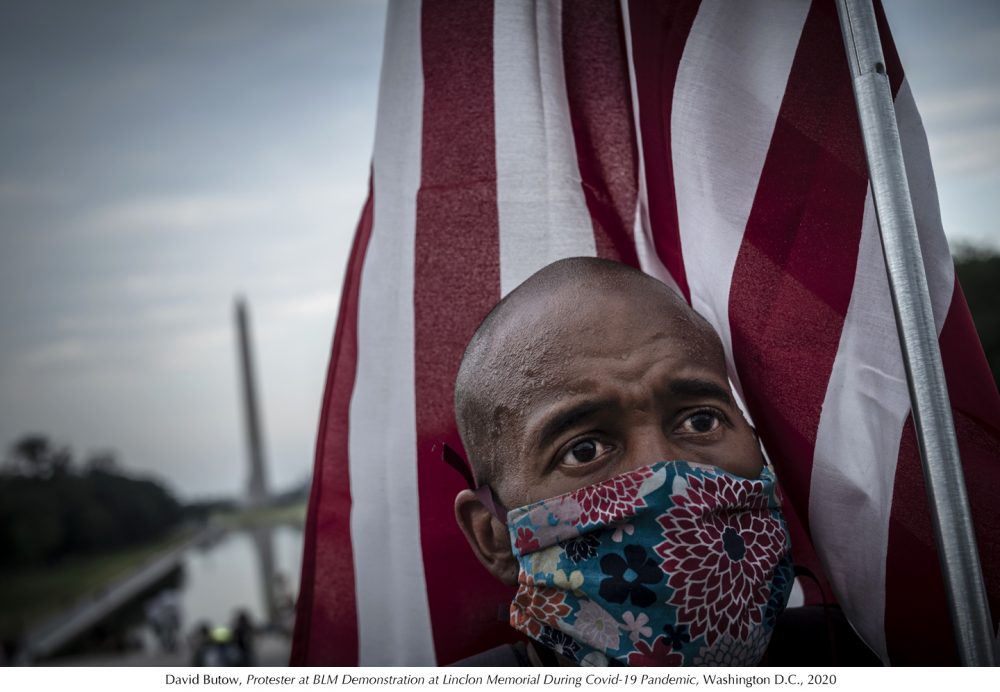
Contrasting with the formality of Butow’s elegant sweeps are Peterson’s graphic, satirical close-ups of the political landscape’s cast of characters whose facial expressions he freezes in exquisite moments of agony and ecstasy. The images are at once surrealistic and alarmingly real.
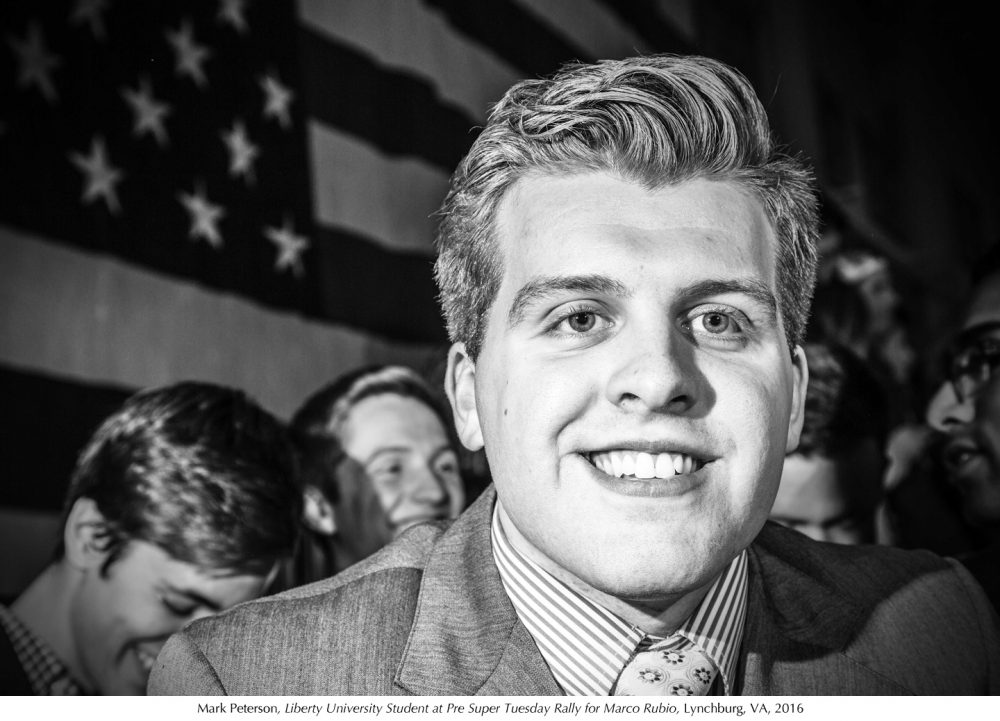
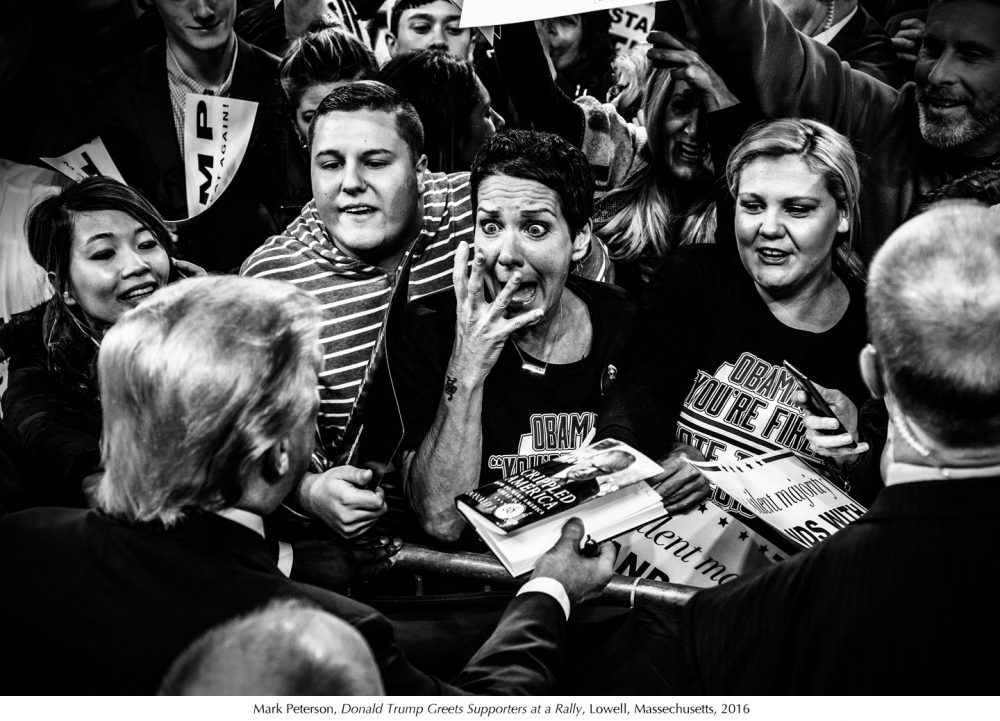
In addition to his close-range portraiture, Peterson also pulls back to document ingenious environmental juxtapositions as well as hilarious details of the political parade’s props, paraphernalia and pomp.
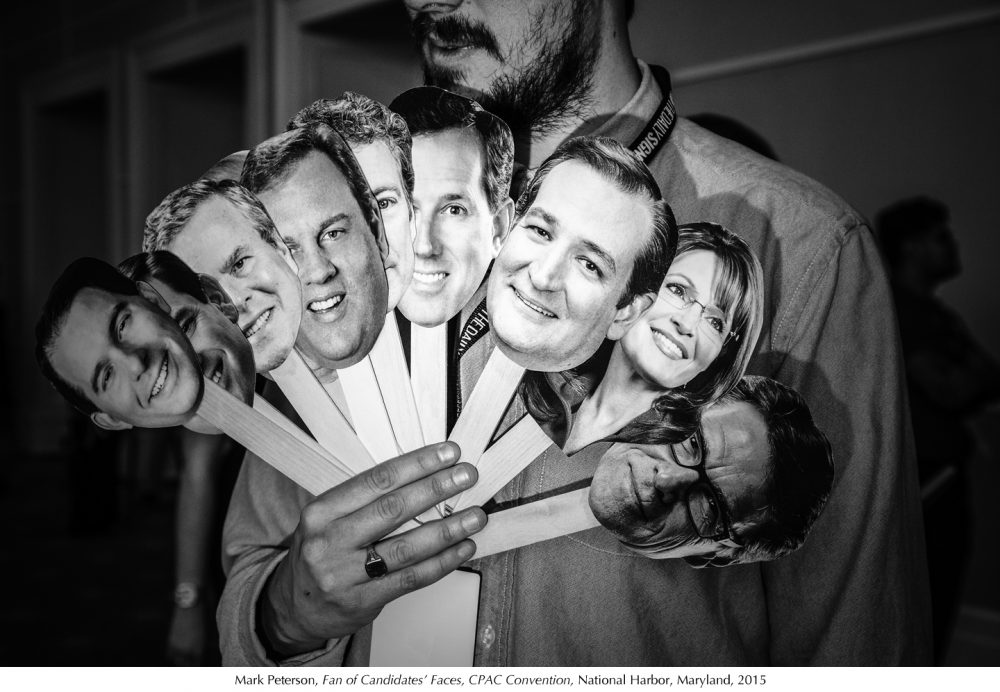
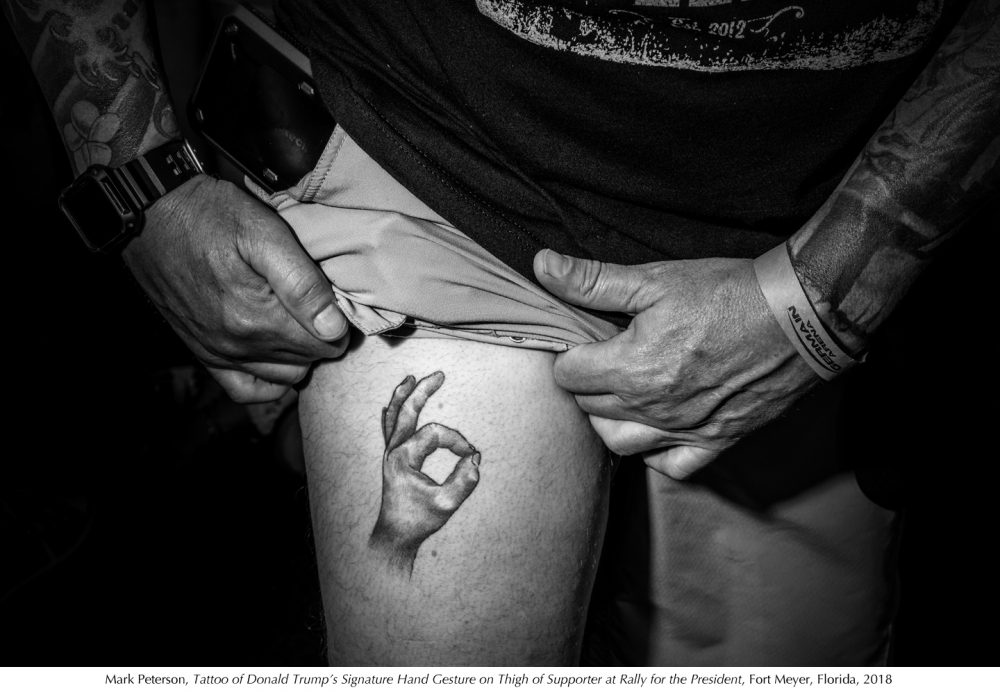
In his essay for Peterson’s book, Political Theatre (2018, Steidl), John Heilemann writes, “Peterson presents the drama and comedy, the transparent fakery and moments of accidental authenticity, and the abject chaos that has transfixed and often mortified anyone paying attention.”
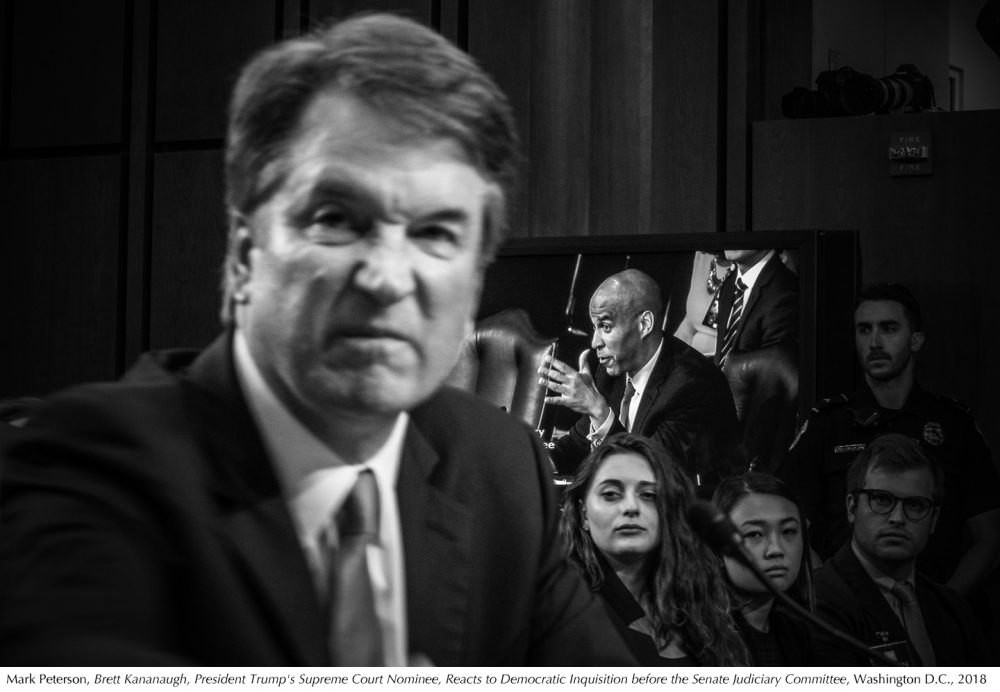
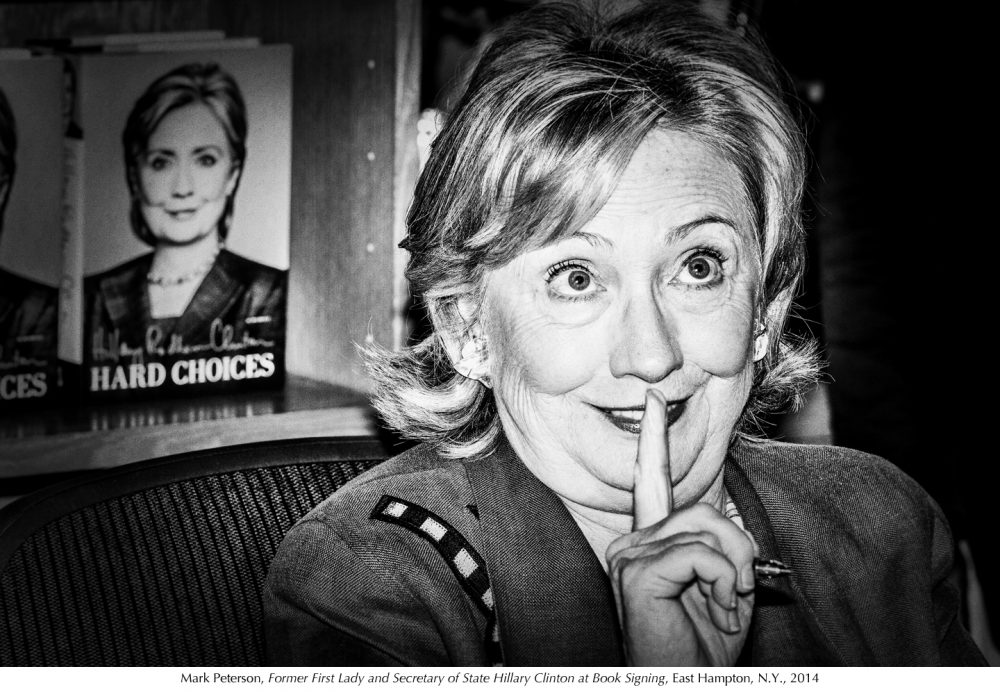
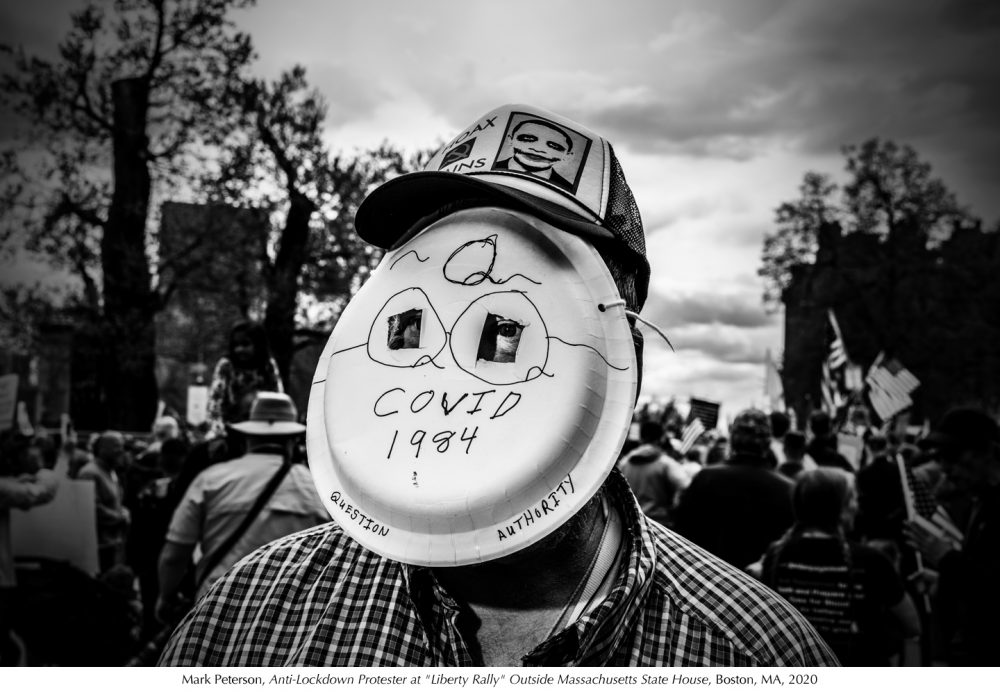
His spectrum of coverage is decidedly democratic itself, applying the same unvarnished capture to subjects of every political party and movement, from Bernie Sanders to Donald Trump; from pro-choice protestors to NRA fanatics. But the common theme oozing through all of Peterson’s political imagery is, in his words, “the cold, naked ambition for power.”
